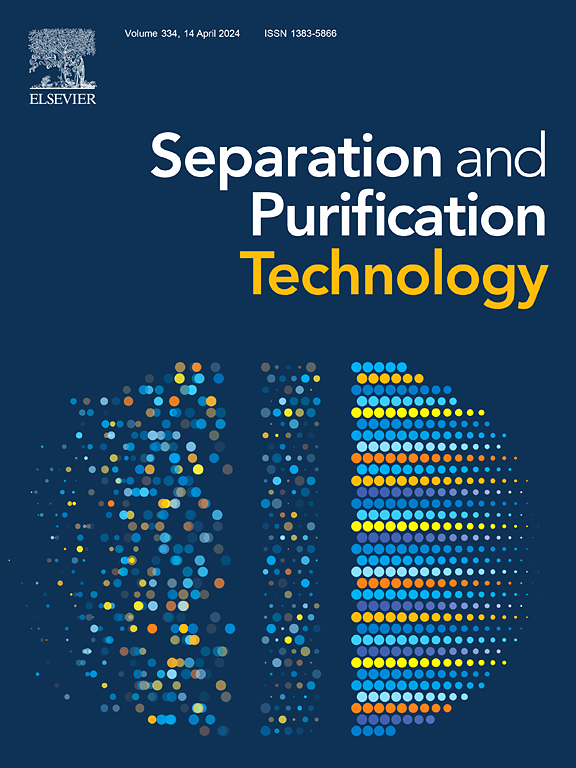综合利用锌浸出残渣和废碳阴极以高效固化锌、氟并回收有价元素的新策略
IF 8.1
1区 工程技术
Q1 ENGINEERING, CHEMICAL
引用次数: 0
摘要
本文章由计算机程序翻译,如有差异,请以英文原文为准。
A new strategy for the comprehensive utilization of zinc leaching residue and spent carbon cathode to efficiently solidify zinc, fluorine and recover valuable elements
Zinc (Zn) leaching residue, a globally prevalent hazardous waste containing Zn, is conventionally treated through redox smelting at 1523–1723 K. However, high residual Zn in slag causes environmental risks and valuable metal loss. Similarly, spent carbon cathode with soluble fluoride (F) and carbon (C), produced globally at over 1.7 million tons annually, threaten soil, groundwater, and biological safety. This study proposes a novel co-treatment strategy for hazardous waste comprehensive utilization. The effects of spent carbon cathode addition, temperature, and holding time on Zn, F, and Fe transformation pathways were examined. At 1373 K, ZnFe2O4 and Zn2SiO4 in the desulfurized Zn leaching residue transformed to Ca2ZnSi2O7, (Zn,Fe)O, and ((Zn,Fe)O)slag, and then reduced to Zn(g) and Fe through spent carbon cathode. F-containing phase from spent carbon cathode were immobilized in molten slag, enhancing Fe particle growth and Zn reduction. Subsequent cooling transformed to Ca4F2Si2O7, achieving a F solidification ratio of 99.92 % and a leaching content of 7.84 mg/L, thereby minimizing environmental risks. Compared with conventional methods, the proposed strategy improved Zn and Fe recovery ratios by 4 % and 78 %, respectively, and reduced Zn leaching content to 0.11 mg/L. This approach utilizes waste to treat waste, contributing to the sustainable development of the global Zn and Al industries.
求助全文
通过发布文献求助,成功后即可免费获取论文全文。
去求助
来源期刊

Separation and Purification Technology
工程技术-工程:化工
CiteScore
14.00
自引率
12.80%
发文量
2347
审稿时长
43 days
期刊介绍:
Separation and Purification Technology is a premier journal committed to sharing innovative methods for separation and purification in chemical and environmental engineering, encompassing both homogeneous solutions and heterogeneous mixtures. Our scope includes the separation and/or purification of liquids, vapors, and gases, as well as carbon capture and separation techniques. However, it's important to note that methods solely intended for analytical purposes are not within the scope of the journal. Additionally, disciplines such as soil science, polymer science, and metallurgy fall outside the purview of Separation and Purification Technology. Join us in advancing the field of separation and purification methods for sustainable solutions in chemical and environmental engineering.
 求助内容:
求助内容: 应助结果提醒方式:
应助结果提醒方式:


